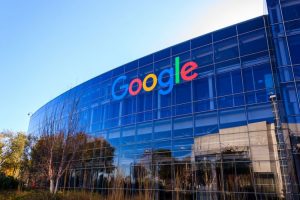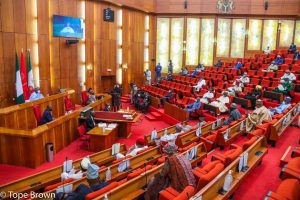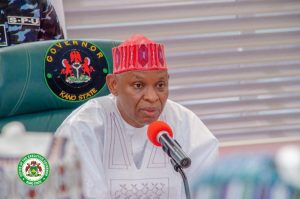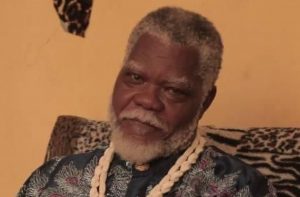Taking a stand on social issues is risky. The world’s largest advertiser did it anyway

But in recent years, the company has used its clout as a marketing powerhouse not just to tout its own brands, but also to promote a social message about gender equality. It’s an ad strategy that comes with risks, but even so, the company isn’t backing down. In the last year, P&G has released ads for Secret deodorant pushing for equal pay for women, a controversial ad for Gillette razors tackling “toxic masculinity,” and a short video series to promote equal division of household chores, featuring brands like Tide, Downy, Charmin and Bounty.P&G has also made an effort to include the transgender community. In June, P&G released its first Gillette ad featuring a transgender man, and in October, the company announced it would remove the Venus symbol, historically used to represent the female sex, from its Always maxi pads to be more inclusive of transgender and nonbinary customers. It’s a strategy that has won praise for its boldness but also triggered backlash from critics who want companies to refrain from social commentary. Nevertheless, Carolyn Tastad, one of P&G’s top executives overseeing the company’s gender equality initiatives, is championing the cause. As president of P&G’s North American operations, Tastad oversees the company’s $30 billion business in the US and Canada. She’s also the executive sponsor of P&G’s gender equality program — a role that includes leading initiatives to challenge gender bias both inside and out of the company. “We have a responsibility and an opportunity to use our voice,” she told CNN Business in a recent interview. “It’s not about lecturing people, and it’s not about telling people how to think.” Betting on a younger fan base Socially-conscious, or so-called “woke” advertising, is risky for brands for a number of reasons. It can irk conservative viewers, who may be uncomfortable with the message. And even among progressives, it can trigger accusations of “woke washing,” as viewers question the motives of the company behind the ad. Meanwhile, taking a bold stand on any issue is particularly tricky for large companies, because doing so can intensify the spotlight on their own internal practices. Related: See the 20 Risk Takers pushing global business forwardP&G knew it faced those risks, but ultimately, the company decided to take a chance anyway. Scott Galloway, professor of marketing at New York University’s Stern School of Business, called that strategy “smart” because it can help keep P&G’s products relevant to a new generation of younger customers. “Being ‘woke’ is going where the money is,” Galloway said. Tastad pointed to outside market research showing that around nine of 10 consumers say they’d purchase a product because that company advocated for an issue they cared about. Tastad also cited research showing that 65% of Millennials will “not buy a brand because it stayed silent on an issue it had an obligation to address.” Despite early criticism, P&G has said that one of its most controversial gender-related ads — the “We Believe” Gillette commercial from last year— paid off because it succeeded in appealing to a young audience. The spot didn’t promote a new razor blade or shaving method. Instead, the ad showed scenes of men catcalling, bullying and harassing women. Then, in a direct reference to the #MeToo movement, it said, “Something has finally changed.” It closed with scenes of men breaking up fights, standing up for women and being attentive fathers. “Is this the best a man can get?” the ad asked, referencing Gillette’s nearly 30-year-old tagline. The ad angered some critics like broadcaster Piers Morgan, who described it as fueling a “global assault on masculinity” and actor James Woods, who described it as jumping on the “men are horrible” campaign. But among consumers under 30, 80% viewed the ad positively, Tastad said. For P&G that was a victory.”The point of entry into shaving is typically 18 years old. At 18, every young boy gets a Gillette razor. We have a program that delivers that,” Tastad said at a Fortune conference in September. “We had to become more relevant.” Gina Delio, a partner at ad agency Tag Creative, described the ad as “brave” and “admirable” but added, “P&G and Gillette need to keep following through and show the depth of their commitment beyond their advertising.” More work to be done As P&G’s executive sponsor of gender equality, Tastad is responsible not only for external gender-related initiatives like ad campaigns, but also for driving the company’s efforts to create an inclusive workplace. It’s a mission that she says comes naturally given her upbringing. Tastad grew up in a small town in Canada in what she describes as a “gender equal household” that led her to expect equality in the workplace, too. Her father was a farmer and her mother was a teacher, and they split household responsibilities. She earned a computer science degree and joined P&G as an IT analyst right out of college. She’s worked in a variety of roles in her nearly 37 years at the company and took the helm of the North America division in 2015, overseeing dozens of brands and more than 25,000 employees. Now, Tastad’s role includes helping P&G meet its goals of gender pay equity and 50-50 representation of men and women at all levels of the company. Internally, there’s still more work to be done. Currently, 47% of P&G’s global employees are women, but as is typical at large companies, the ratio is lower at higher rungs of management. About 40% of P&G’s C-suite executives are women.Although those numbers fall short of 50-50, they’re higher than they were five years ago — a sign that the company’s efforts are starting to work. P&G has also extended that focus to its supply chain and the outside contractors it works with. In 2018, only about 10% of P&G’s commercials around the world were directed by women, so the company announced a goal to get to 50% by 2023. Now, more than 50% of P&G’s North American ads are directed by women, and worldwide, the number is more like 25%, according to the company. Internally, Tastad is trying to push the company to go faster to meet its diversity and inclusion goals. When P&G’s brands take a stand on social issues, it’s important they’re authentic, she said, because that’s what separates good campaigns from “woke washing.” “It has to be fully integrated into the business, or it doesn’t resonate it; it seems peripheral [and] detached.” “It’s not enough to make an ad,” she said. “It’s got to be the total picture.”







